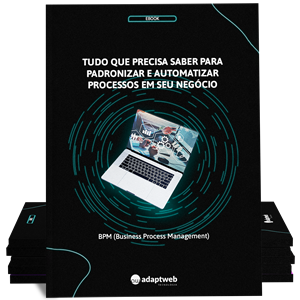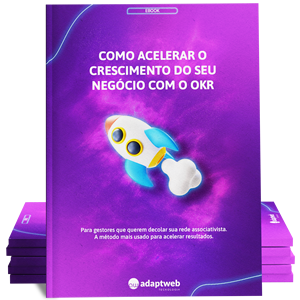They found that their controlled drinking intervention produced significantly better outcomes compared to usual treatment, and that about a quarter of the individuals in this condition maintained controlled drinking for one year post treatment (Sobell & Sobell, 1973). In addition to shaping mainstream addiction treatment, the abstinence-only 12-Step model also had an indelible effect on the field of SUD treatment research. Most scientists who studied SUD treatment believed that abstinence was the only acceptable treatment goal until at least the 1980s (Des Jarlais, 2017).
- In fact, prior research has shown that controlled drinking is far less accepted in the US than it is in the UK (Rosenberg et al., 1992), Australia (Donovan and Heather, 1997) or Norway (Duckert, 1989).
- However, they will be included in a further analysis on young adults based on the same premises as in present article but with experience from other treatments than the 12-step treatment.
- Nordström and Berglund, like Wallace et al. (1988), selected high-prognosis patients who were socially stable.
On balance, this study is one of the few to empirically examine the effect of drinking goal on treatment outcome, and in particular, matching treatment options to drinking goals. If supported in future studies, these results could be used to inform treatment planning for patients with alcoholism. To that end, an important feature of this study is the accessibility and clinical appeal of the drinking controlled drinking vs abstinence goal measure, which can be readily applied to a wide variety of treatment settings. The current review highlights a notable gap in research empirically evaluating the effectiveness of nonabstinence approaches for DUD treatment. While multiple harm reduction-focused treatments for AUD have strong empirical support, there is very little research testing models of nonabstinence treatment for drug use.
Stephanie S. O’Malley
Importantly, clinical assessment of drinking goal is a readily accessible clinical variable which, given the results presented herein, is potentially critical to treatment planning and prognosis. The current review highlights multiple important directions for future research related to nonabstinence SUD treatment. For example, despite being widely cited as a primary rationale for nonabstinence treatment, the extent to which offering nonabstinence options increases treatment utilization (or retention) is unknown. In addition to evaluating nonabstinence treatments specifically, researchers could help move the field forward by increased attention to nonabstinence goals more broadly.
Additionally, individuals are most likely to achieve the outcomes that are consistent with their goals (i.e., moderation vs. abstinence), based on studies of both controlled drinking and drug use (Adamson, Heather, Morton, & Raistrick, 2010; Booth, Dale, & Ansari, 1984; Lozano et al., 2006; Schippers & Nelissen, 2006). The past 20 years has seen growing acceptance of harm reduction, evidenced in U.S. public health policy as well as SUD treatment research. Thirty-two states now have legally authorized SSPs, a number which has doubled since 2014 (Fernández-Viña et al., 2020). Regarding SUD treatment, there has been a significant increase in availability of medication for opioid use disorder, especially buprenorphine, over the past two decades (opioid agonist therapies including buprenorphine are often placed under the “umbrella” of harm reduction treatments; Alderks, 2013). Nonabstinence goals have become more widely accepted in SUD treatment in much of Europe, and evidence suggests that acceptance of controlled drinking has increased among U.S. treatment providers since the 1980s and 1990s (Rosenberg, Grant, & Davis, 2020). Importantly, there has also been increasing acceptance of non-abstinence outcomes as a metric for assessing treatment effectiveness in SUD research, even at the highest levels of scientific leadership (Volkow, 2020).
Normal drinking in recovered alcohol addicts
The objective of this study is to elucidate the contribution of drinking goal to treatment outcome in the context of specific behavioral and pharmacological interventions. The position of ALCOHOLICS ANONYMOUS (AA) and the dominant view among therapists who treat alcoholism in the United States is that the goal of treatment for those who have been dependent on alcohol is total, complete, and permanent abstinence from alcohol (and, often, other intoxicating substances). By extension, for all those treated for alcohol abuse, including those with no dependence symptoms, moderation of drinking (termed controlled drinking or CD) as a goal of treatment is rejected (Peele, 1992).
However, the extent of their problems according to ICD-10 (International Statistical Classification of Diseases and Related Health Problems, 10th edition) or DSM 5 (Diagnostic and Statistical Manual of mental disorders, 5th edition) was not measured. Dr. Stanton Peele, recognized as one of the world’s leading addiction experts, developed the Life Process Program after decades of research, writing, and treatment about and for people with addictions. If you believe you or someone you love may be struggling with addiction, let us hear your story and help you determine a path to treatment. If you are struggling with some of the following signs above, be sure to contact your physician or seek help at a substance abuse treatment facility. Take our free, 5-minute substance use self-assessment below if you think you or someone you love might be struggling with substance use. The evaluation consists of 11 yes or no questions that are intended to be used as an informational tool to assess the severity and probability of a substance use disorder.
Initial Preference for Drinking Goal in the Treatment of Alcohol Problems: II. Treatment Outcomes
One study found that among those who did not complete an abstinence-based (12-Step) SUD treatment program, ongoing/relapse to substance use was the most frequently-endorsed reason for leaving treatment early (Laudet, Stanick, & Sands, 2009). A recent qualitative study found that concern about missing substances was significantly correlated with not completing treatment (Zemore, Ware, Gilbert, & Pinedo, 2021). Unfortunately, few quantitative, survey-based studies have included substance use during treatment as a potential reason for treatment noncompletion, representing a significant gap in this body of literature (for a review, see Brorson, Ajo Arnevik, Rand-Hendriksen, & Duckert, 2013).
Vaillant (1983) labeled abstinence as drinking less than once a month and including a binge lasting less than a week each year. In sum, research suggests that achieving and sustaining moderate substance use after treatment is feasible for between one-quarter to one-half of individuals with AUD when defining moderation as nonhazardous drinking. While there is evidence that a subset of individuals who use drugs engage in low-frequency, non-dependent drug use, there is insufficient research on this population to determine the proportion for whom moderation is a feasible treatment goal. However, among individuals with severe SUD and high-risk drug or alcohol use, the urgency of reducing substance-related harms presents a compelling argument for engaging these individuals in harm reduction-oriented treatment and interventions.
Clinicians have long recognized that client’s attitudes and goals towards drinking change throughout the course of treatment. The dynamic nature of drinking goal may be an important clinical variable in its own right (Hodgins, Leigh, Milne, & Gerrish, 1997). The present study was limited to the assessment of drinking goal at the onset of treatment and future studies examining drinking goals over the course of treatment seem warranted. Likewise, further research should consider matching patients’ drinking goals to specific treatment modalities, whether behavioral or pharmacological in nature.










